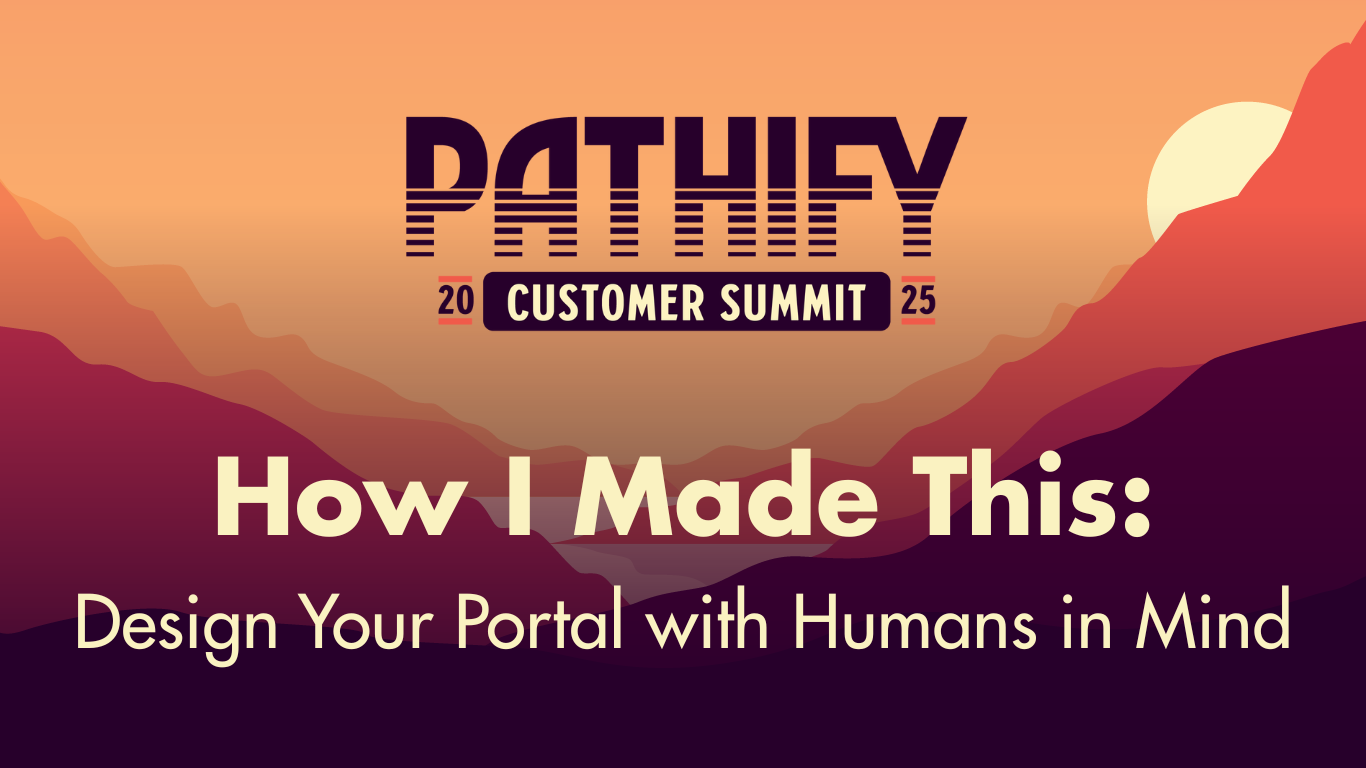Launching a Pathify portal doesn’t mark the finish line — instead, it represents the start of a journey to engagement and success. To understand how institutions keep momentum going post-launch, Maddie Dahlstrom, Pathify’s Manager of Implementation, Training and Adoption, sat down with three campus leaders to chat about adoption, measuring success and using feedback to drive forward.
Aenea Clark, Digital Operations Coordinator at Augusta University, Courtney Dubin, Managing Director, Digital Product Management at Braven, and Anna Becker, IT Project Manager at Pima Community College, shared how they transformed their portals into meaningful tools for student engagement — spotlighting strategies for managing change and continuously improving digital campus experiences.
Small Tweaks, Big Impact
Clark, Dubin and Becker agreed, sometimes, the smallest updates deliver valuable results. At Pima, Becker’s team focused on simplifying user introduction to MyPima. “We pushed announcements with a short GIF showing users how to customize their dashboards, then directed them to FAQs for extra support,” Becker said. At Augusta, the team introduced a custom feedback widget during myAugusta rollout to gather students’ thoughts, using their input to fine-tune the platform in real-time. At Braven, Dubin stressed the power of proactive messaging. “We saw a big jump in engagement when students heard about MyBraven in their first course,” she explained.
Driving Mobile Engagement
Capturing attention via mobile demands responsive design and intentional strategy. Dubin’s team prioritized notifications. “We focused on notifications that delivered value,” Dubin shared, noting how Pathify Analytics helped the team target when to send relevant updates over generic blasts.
Clark recommended using popular topics with college students as engagement “hooks.” “We see the highest viewership and engagement on announcements around free food and merch,” she said, pointing to the power of appealing, targeted alerts to cut through clutter.
At Pima, Becker and her team led a culture shift by launching a brand new mobile app. The team rolled out a multi-channel campaign, including teaser videos, QR codes on Pages, Zoom trainings and even old-school flyers to build awareness and drive downloads. “We wanted students to see the app as an extension of their desktop experience,” she added.
Feedback = Fuel
Across all three institutions, feedback powered progress — Becker, Clark and Dubin actively sought input to guide portal improvements. At Pima, Becker spearheaded feedback efforts across nearly 30 departments in preparation for rolling out the new MyPima portal. “We wanted different departments around campus to feel involved and heard,” she noted. At Braven, Dubin positioned students as co-creators. “We followed up with every student who submitted feedback to learn more, even compensating them for their time,” she said, noting the importance of soliciting specific feedback, like comparisons to other consumer apps. While not every piece of feedback made it into production, she emphasized the importance of honesty and transparency. “Do your best in managing all the feedback,” she continued. “As long as people feel heard and you’re transparent, people usually give grace.”
Encouraging Adoption & Defining Success
Adoption and success go hand in hand — both rely on listening, learning and thoughtfully responding. At Braven, Dubin described adoption as an ongoing cycle of observing behavior, analyzing engagement and evolving features. “We adjust MyBraven based on how users interact with the platform,” Dubin said.
The Pima team boosted adoption by leveraging the Search feature into a discovery tool. Her team added labels, visuals, tags and videos to make content more intuitive and engaging, helping users easily navigate the MyPima portal.
At Augusta, Clark embedded student needs into the portal by building custom widgets — like Handshake job feeds for graduating seniors — directly in the portal. “Everything a student might need — depending on their role — lives right in the portal, there’s no need to visit other sites,” she explained.
All three leaders agree — building slick portals and generating strong adoption reflects real impact. Personalization, intentional design and a feedback-first mindset turn portals into meaningful spaces for engagement, connection and support.
Want to catch the full conversation? Watch the recording with Braven, Pima Community College and Augusta University here!
